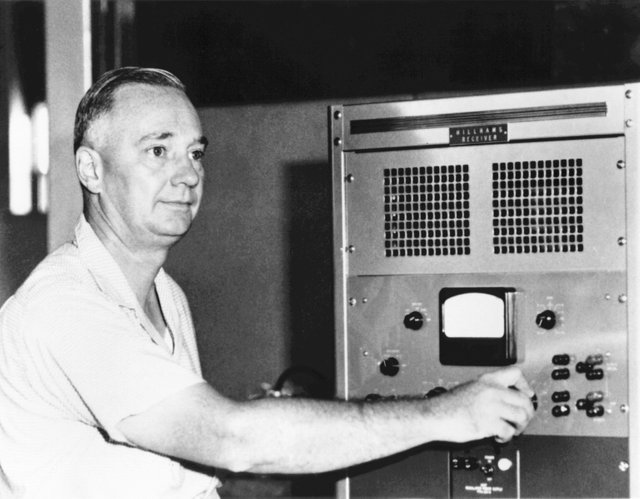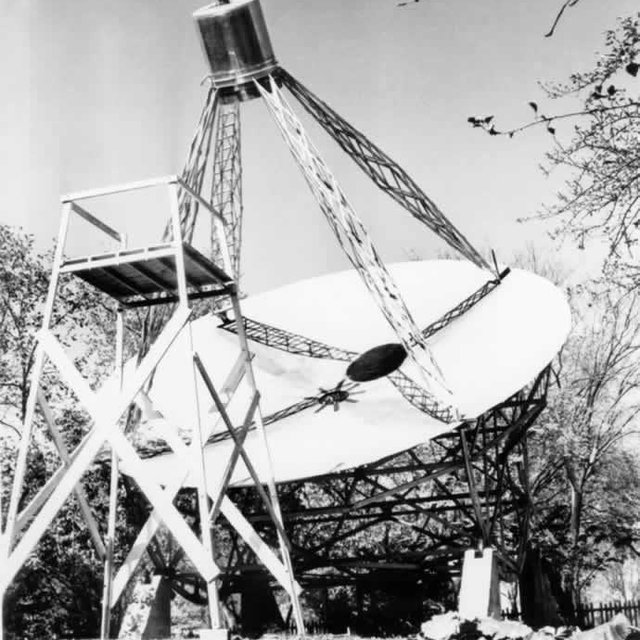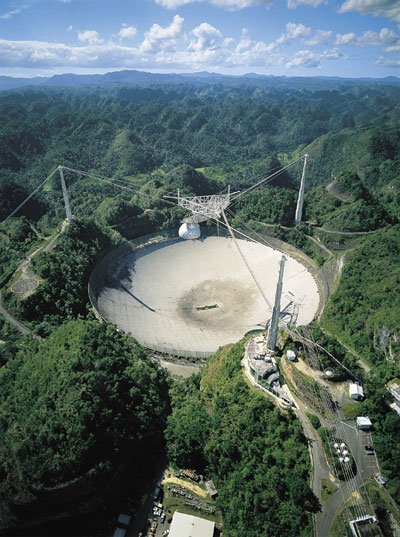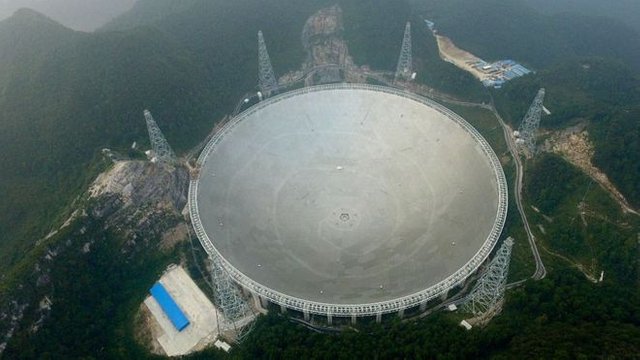Grote and his radio telescope

The radio telescope was created by Grote Reber, this character was born and grew up in Chicago (USA) on December 22, 1911. In 1933 he graduated as a Radio Engineer. He was one of the pioneers of radio astronomy and a radio amateur.
That same year he met a radio engineer working at Bell Laboratories and applied for a job at the laboratory, but at that time were the years of the great depression so there were no vacancies available and Grote was not admitted.
As he did not get a place where he wanted to work, he started working in several radio manufacturers in Chicago and some time later he decided to build his own radio telescope in his backyard.

The design of this one was more advanced than the one of that worker of the Bell Laboratories, this device consisted of a parabolic mirror of metal of nine meters of diameter that sent the received radiations to a receiver located to eight meters of the mirror. At the age of 26, he finished building his radio telescope.
In 1944 he published the first map of the Milky Way based on electromagnetic radiation, this allowed scientists to awaken a great interest in radio astronomy. Later, Reber spent four years working in the offices of the National Institute of Standards and Technology (NIST). Six years later he wanted to return to his field but realized that there were new instruments and these were more expensive.
The standard theory of space radio emissions indicated that they were due to the radiation that is emitted by all hot bodies. With this, it was expected that the radiation would be preferably of high energy, since there was the presence of stars and other hot bodies.
Now, the Arecibo Radio Telescope in Puerto Rico was the largest in the world with about 305 meters in diameter, which was built in 1960 and three years later made its first observation.

With this apparatus several discoveries were made, some of them were
- In 1964, they determined that the rotation period of Mercury is 59 days and not 88 days as it was believed.
- In 1989, he took a picture of an asteroid (Castalla 4769) for the first time in history.
In the decade of the 90's, a scientific project was being prepared that this week saw the light, it is the FAST, for its acronym in English Spherical Aperture Radio Telescope of half a kilometer of diameter, which is now the biggest in the world surpassing the Arecibo one.
This device is designed to investigate the history of the universe from interstellar molecules. The signals that it receives are diverse, this radio telescope will search for gravitational waves and dark matter, it also receives possible signals from other civilizations outside the Earth.

During the 20 years of construction, some 1.2 billion yuan were invested, equivalent to about $175 million. Its size is equivalent to about 30 football fields.
It consists of 4,400 aluminum panels that move to focus on different areas in the sky. The range of vision of FAST is so wide that it is capable of finding stars, cosmic phenomena and extraterrestrial life unlike the previous ones.
Information: Radiotelescope, Grote Biography, Arecibo Radio Telescope, FAST and Images.